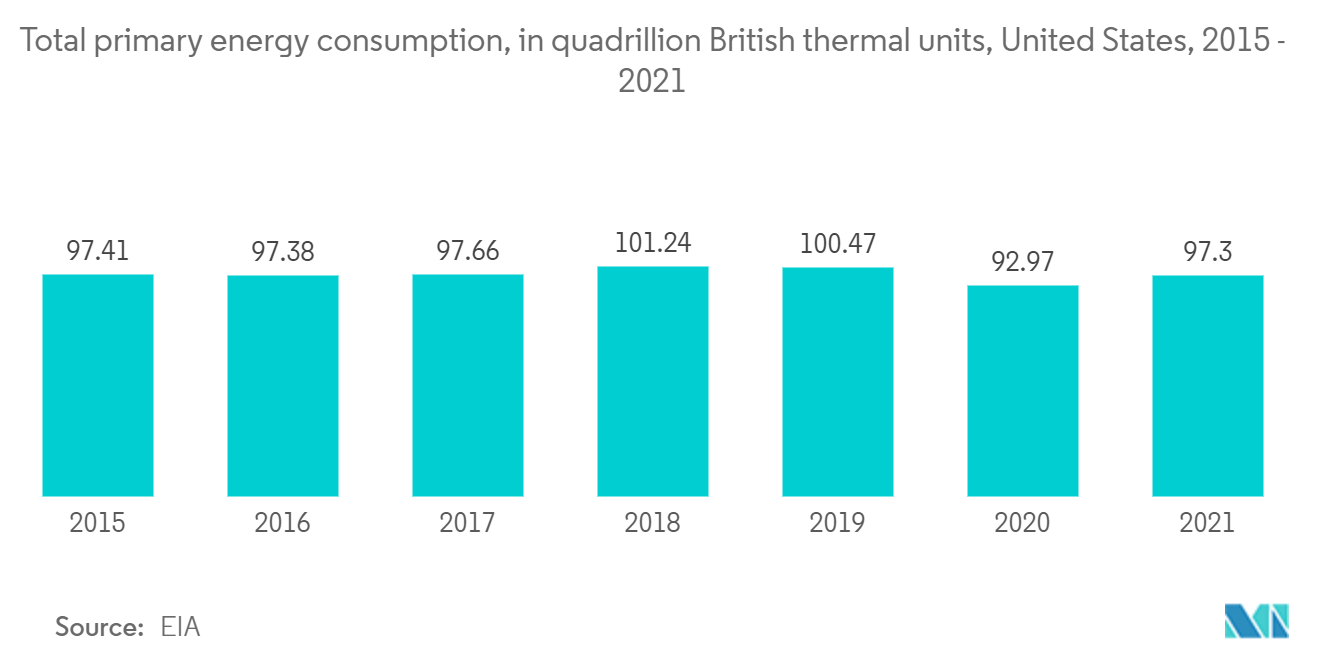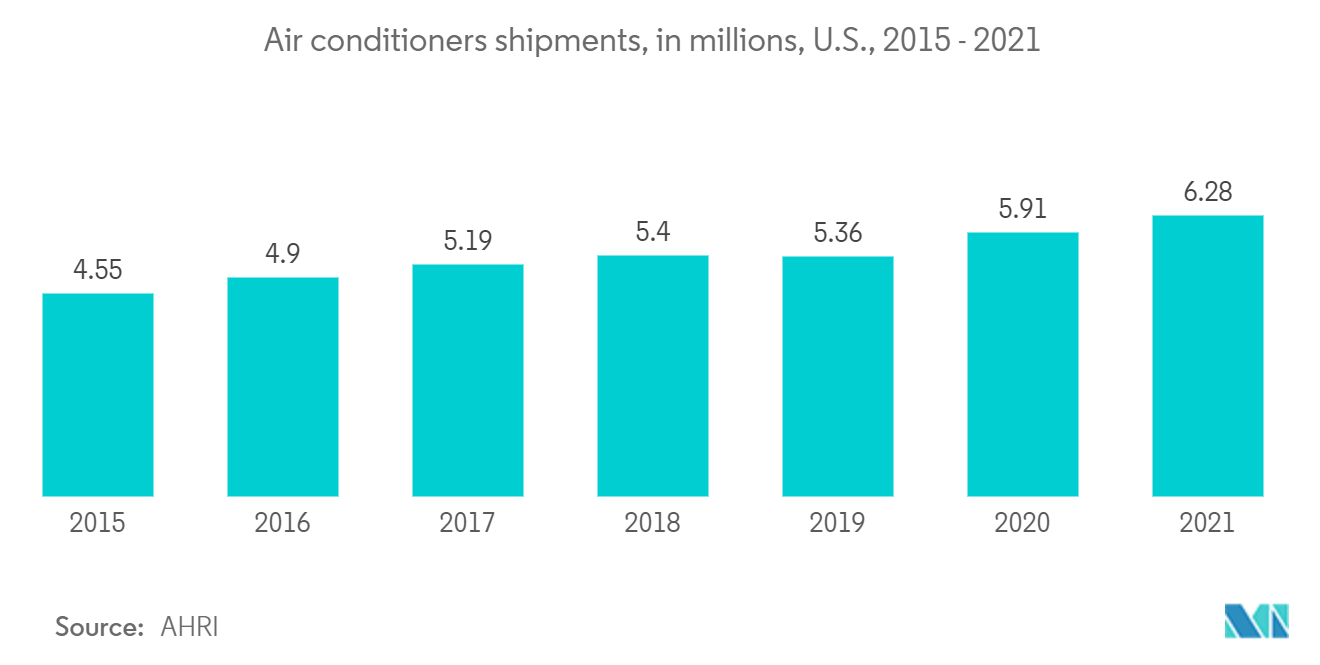Market Trends of United States HVAC Equipment Industry
This section covers the major market trends shaping the US HVAC Equipment Market according to our research experts:
Flourishing Energy and Construction Sectors Bodes well for the Market
- Energy consumption in manufacturing facilities and commercial buildings accounts for nearly half of all energy consumed in the United States, costing approximately USD 200 billion annually. HVAC systems are witnessing growth, owing to the increasing need to install and maintain the existing system's energy efficiency. Further, in July 2021, Trane Technologies partnered with Brookfield Renewable to jointly pursue distributed generation and energy efficiency opportunities with commercial and industrial customers in the country.
- The United States is ranked second among the world's top ten energy-consuming countries, trailing only China. The increased activity within the industrial sector, comprising manufacturing facilities (specifically the food industry), hospitals, data centers, and other institutional and industrial facilities, has been driving the demand for HVAC equipment.
- The presence of long-standing regional manufacturers with custom solutions to industrial problems has catalyzed market growth. For instance, Daikin's 160-ton Daikin WGS water-cooled screw compressor provided Camoplast Inc. with an 80,000-sq-ft automotive component injection molding facility with a reduced annual electricity usage of 30%. The company's chiller replaced eight small chillers during the upgradation project to cool water for industrial processes.
- Further, according to the United States Census Bureau, the value of the commercial construction placed in place has rebounded to pre-Recession levels, reaching USD 91.03 billion in 2021, following a substantial decline in the U.S. commercial construction market during the 2008 Recession. In 2022, it is anticipated that construction starts in the U.S. will total about USD 135 billion. Such growth in the commercial industry will create an opportunity for the local and international vendors to provide HVAC Equipment according to the company's requirements.
- Moreover, air-source heat pumps have been used for years in nearly all parts of the United States. Until recently, they have not been used in areas that experienced extended periods of subfreezing temperatures. However, in recent years, air-source heat pump technology has advanced to offer a legitimate space heating alternative in colder regions. Further, according to the U.S Department of Energy, when properly installed, an air-source heat pump can deliver up to three times more heat energy to a home than the electrical energy it consumes. This is possible as a heat pump transfers heat rather than converting it from a fuel-like combustion heating system.
- Besides, the maintenance of hygienic conditions is of vital importance for food processing facilities. Therefore, the Environmental Protection Agency (EPA) has laid down specific energy performance indicators to assess food processing plants' energy efficiency with performance measurements compared to other facilities across the United States. For a facility to acquire an Energy Star certification, it must surpass a score of 75 out of 100. By providing custom-made solutions with an outlook toward increased capacity and energy efficiency, industrial HVAC equipment caters to the larger market.

Air Conditioning is Expected to Hold Significant Share
- Air conditioning equipment is expected to hold a significant share of the HVAC equipment market, owing to the trend of an increasing number of residential and commercial users, combined with government regulations for energy efficiency and eco-friendly equipment. Since 1990, the energy demand for space cooling has more than tripled, making it the fastest-growing end-use equipment in buildings.
- Moreover, according to the Air-Conditioning, Heating, and Refrigeration Institute (AHRI), air conditioner (A/C) shipments in the United States reached 6.28 million units in 2021. The total number of air conditioners outnumbers the country's population, which indicates a growing market in the region.
- Further, the New Jersey government's COOLAdvantage Program delivers tax credits and rebates for utilizing or installing energy-efficient central heat pumps or air conditioners. All these monetary programs and favorable government support will aid in the long-term growth of product demand.
- In addition, the United States has the largest market for air conditioning systems in terms of volume sales. According to a report published by the US Department of Energy, air conditioners are installed in over 70% of homes in the United States. As a result, OEMs have a 20-30% market opportunity in terms of new unit sales and oncoming replacement demand due to aging products.
- Furthermore, the Federal Energy Management Program (FEMP) has set standards for minimum energy efficiency requirements with Energy Star. For example, when the air conditioner's minimum efficiency starts from 9.5 EER and 11.0 IEER and goes up to 15.0 SEER and 12.5 EER (for single-phase), the efficiency rating varies based on the equipment size and capacity.

